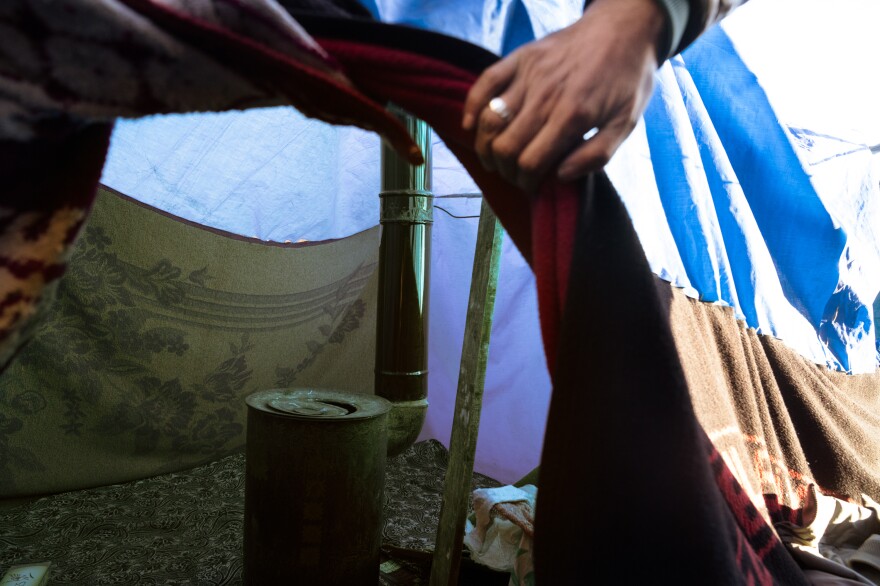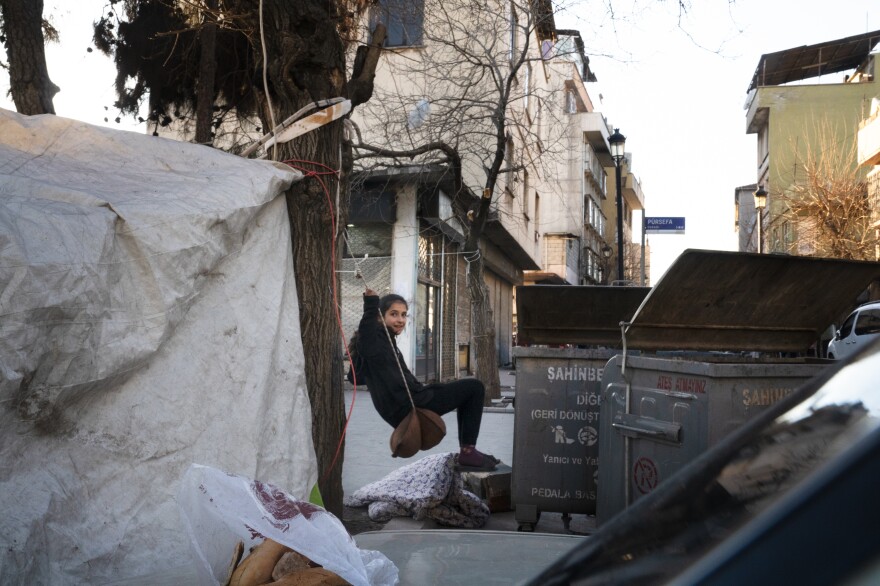GAZIANTEP, Turkey — Eight families with eight tents are camped in the shadow of apartment buildings along a busy road.
Their homes are still standing nearby, but they're afraid to sleep in them. The earth still rumbles every day. There have been more than 6,000 aftershocks since a devastating earthquake rocked Turkey and Syria on Feb. 6.
"I just packed everything yesterday, thinking that we would go back to the house. I packed all my stuff," says Mustafa Kader, 38. "And then the children said, 'I'm scared to go back to the house.' So we just unpacked everything, and we're still here."
The earthquake killed 45,000 people, mostly in Turkey but also in Syria, destroyed and damaged tens of thousands of homes, and left as many as a million people estimated to be seeking shelter.

More than 40,000 buildings are at risk of collapse and must be demolished, Turkish authorities warn. Many in Turkey are worried about sleeping in their homes, making the country's sudden homelessness crisis even more profound.
Turkey's disaster relief agency says it pitched 300,000 tents in the earthquake zone — large, sturdy dwellings. But then there are small, unofficial encampments people set up on their own, next to their homes or in city squares — like this one.
Twice displaced
The eight families here are Syrian refugees. They fled the civil war 11 years ago and built lives just across the border in Turkey. They never imagined they'd have to escape their homes again.
There's some hostility to Syrian war refugees here. A Turkish passerby asks why we're focusing on these families scrounging by when there are organized government camps helping those who actually lost their homes. These families want to camp out close to their homes, where they can use the bathroom.

Like much of the city of Gaziantep, their home is still standing. But walls are cracked. Running water and gas have been spotty since the earthquake, so many have left the city, or stay in tents.
Kader built his small square tent with blue tarp and winter blankets tied together with string and strips of thick fabric a tailor donated.
Inside, seven people — he, his wife and their five children — sleep on thin mattresses surrounding a small furnace to keep them warm. A chimney pokes out of a hole cut in the tarp roof. They walk home to use the restroom, then come back to the tent.
"I don't like it here," says Emine, his 10-year-old daughter. "Look at my face. Look at my hands." They're deeply cracked from the winter cold.

The kids play on an improvised swing set: a rope tied to a tree next to a tent with a pillow for the seat. Yousef Nahsen, 27, asks to be photographed sweeping.
"The Syrians are dirty, they say," Nahsen says. "Look at us. We are collecting the dirt all around our tents."
The night guard
Nahsen fashions himself the camp guard. He wears a black security guard jacket he found somewhere and stays awake at night. There are rumors of looters amid the rubble, and a sense of desperation.
He says, the other day, his neighbor cried because someone stole diapers from his tent. Later, the man denied it happened.

All eight tents are connected by a jumble of thin string crisscrossing from one roof to the other.
"Otherwise, they would just, you know, fall down," says Ramis Jessi, another tent dweller here. "When you tie them together, it's just going to be warmer inside the tents."
These eight families, connected by a web of string, hope it won't be long before the aftershocks stop and they feel safe to go back home.
Copyright 2023 NPR. To see more, visit https://www.npr.org.





